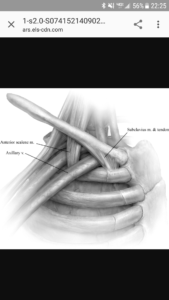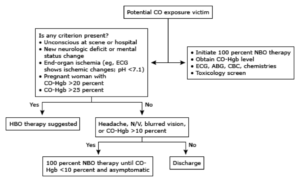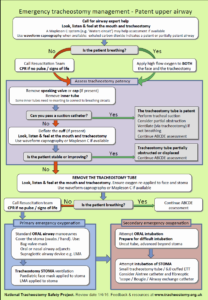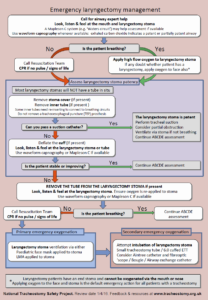I had just arrived for my night shift when my colleagues notified me that a level one trauma was coming in in about 10 minutes. EMS had called over the radio, “61-year-old female with self-inflicted GSW to the left chest. Tachycardic, 94% on room NRB. Vitals otherwise stable. ETA 10 minutes.” A level one trauma was paged out, and I headed to the trauma room to prepare. A chronically ill-appearing female rolled in, in no distress at all, sitting mostly upright on the EMS stretcher. The tension lessened somewhat due to her stable appearance.
______________________________________________________________________
“I don’t want anything done for me. I have a living will. I don’t want any help. I just want to die.” These were the first words she spoke as she arrived.
______________________________________________________________________
I had not encountered this before. I hesitated for a second before telling Carol (her name has been changed to protect her identity) that since this was a suicide attempt we were obligated to help her. I turned to my attending, questioning what I had just said and asked what I actually should do. My attending said that the assumption was that she was not of sound mind (did not have capacity) and therefore required assistance. In addition, to her dismay, EMS had not brought her living will to the ED.
______________________________________________________________________
Carol’s work-up in the trauma room showed a GSW to the left chest just lateral and above the left nipple, and an exit wound to the left upper back. Shockingly, she had no pneumothorax on the chest x-ray or ultrasound, and no cardiac injury. The bullet had struck her breast implant and traversed around her ribs, fracturing one, and exited out her back without causing any major injury.
______________________________________________________________________
“Let me die. I don’t want to live.” Carol made sure we understood her wishes, but we ignored them for the time being. She was taken to the CT scanner and was stable, and eventually was admitted to the trauma service.
______________________________________________________________________
Carol had a nurse assigned to her as a one-on-one sitter in the ED, who, over the span of the next two hours, learned a lot about her. Carol was a very sick individual. She had had uterine cancer, a cystectomy and subsequent urostomy, transverse myelitis resulting in paralysis of both legs, many abdominal surgeries, and multiple other comorbid medical conditions. She had been in the hospital numerous times already this year, and had actually been seen by palliative care as an inpatient two months prior. In the nurse’s perspective (and mine, after hearing about their conversations), she was of sound mind. She had capacity, and she understood her current situation very well. She was depressed, but had more than enough reason to be. She knew she was chronically ill, and was apparently told by her doctors that nothing else could be done for her situation, and that she would end up dying from one of her many chronic illnesses. On her last visit to the ED (the day prior, diagnosed with a UTI), her code status was clearly a DNR in our system. Upon arrival to the ED the following day, this was reversed, and she was made a full code.
______________________________________________________________________
It is rather well known that most individuals who live after a failed suicide attempt end up regretting it. However, Carol didn’t – not one bit. “I’ve lived a long, good life. I know what’s coming for me, and I don’t want to experience it. I don’t want to suffer. I’m ready to die.”
______________________________________________________________________
Since my encounter with Carol, I set out to research what I should do in this situation, and most of my research led me to advice from the legal world. If a physician knowingly treats somebody who has a signed DNR order, the consequences can be dire, including suspension, revocation of license, and a fine of up to $10,000(1). However, there seems to be no real consensus as to what the right answer is in the case of attempted suicide. There are many case reports detailing this situation, and in the majority of cases, care is ultimately withdrawn and the DNR is respected. Sometimes, it depends on the state in which the Advance Directive was created, as there may be a clause in which a suicide attempt voids the AD. One article even stated that time should be dedicated to decide if the “suicide attempt was reasonable, given the patient’s terminal condition”(2).
______________________________________________________________________
As much as we would like medicine to be black and white, it isn’t, and this case only reinforces that fact. So, in the chance you are involved in a situation like this, what is the right thing to do? From what I have read, the right answer for us as emergency physicians is probably to treat the patient like you would any other that comes to your door. Oftentimes, these situations require lengthy psychiatry consults and an ethics consult, and extensive discussions with family and the patient (if possible). Most people who attempt suicide and survive end up regretting their decision, and you should treat your patient as though they will, too.
______________________________________________________________________
(1) http://www.caseyfrank.com/articles/how-to-reconcile-directives-with-suicide.pdf
(2) https://www.chausa.org/docs/default-source/general-files/case-study—a-terminally-ill-suicide-attempt-patient-in-the-ed-pdf.pdf?sfvrsn=0
![Room9er ["Room Niner"]:](https://room9er.com/wp-content/uploads/2020/03/cropped-Screen-Shot-2020-03-08-at-3.16.16-PM.png)




